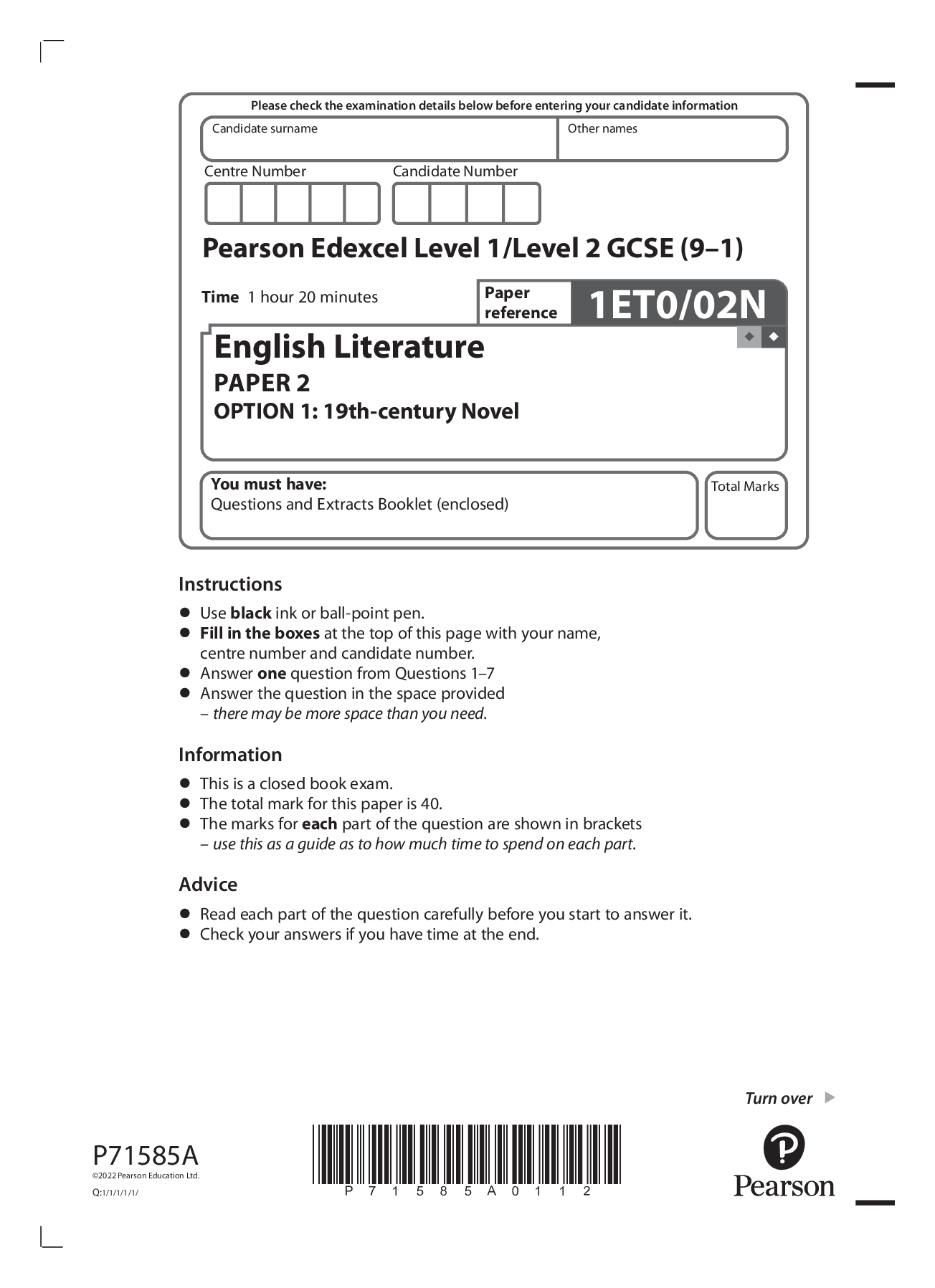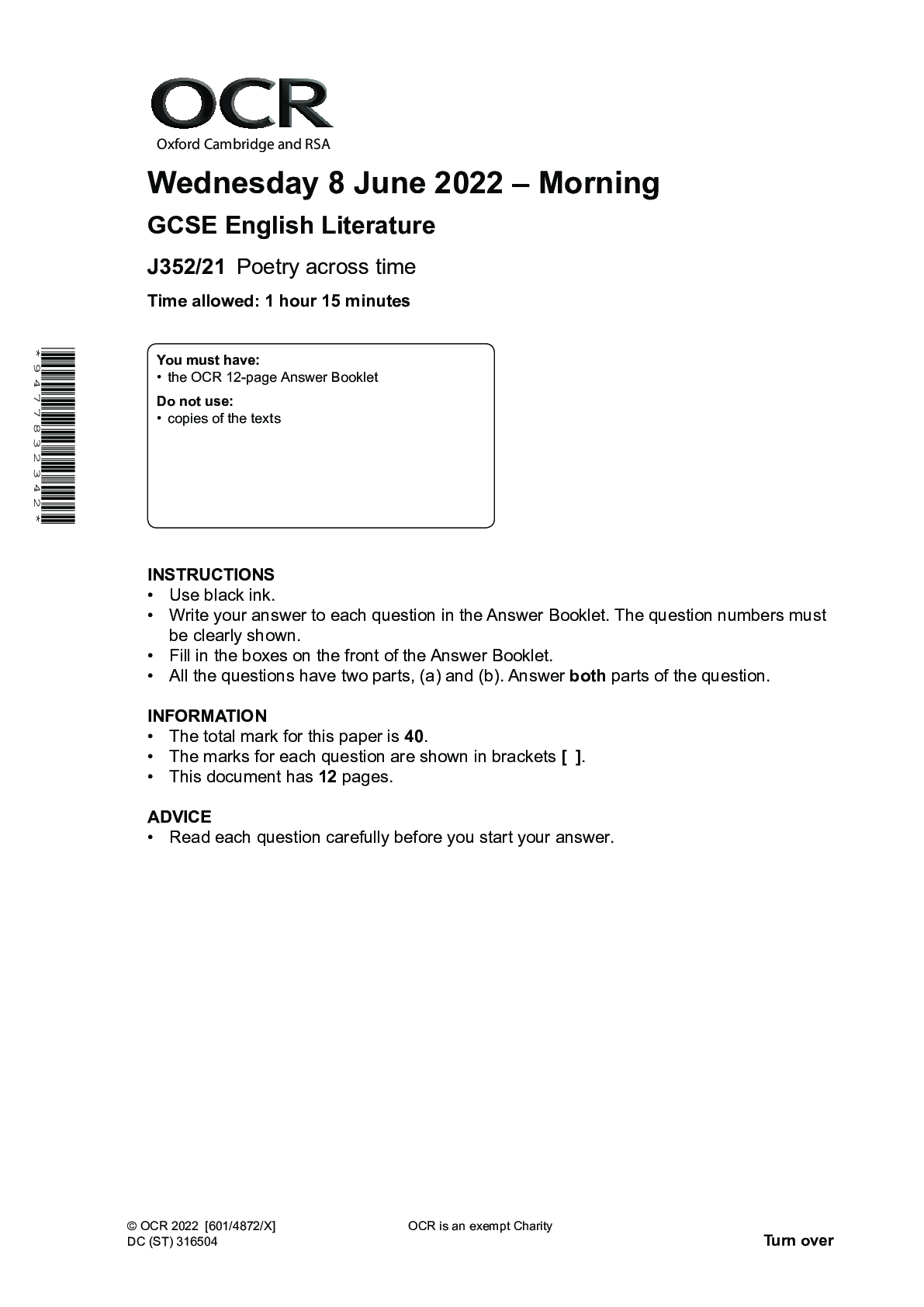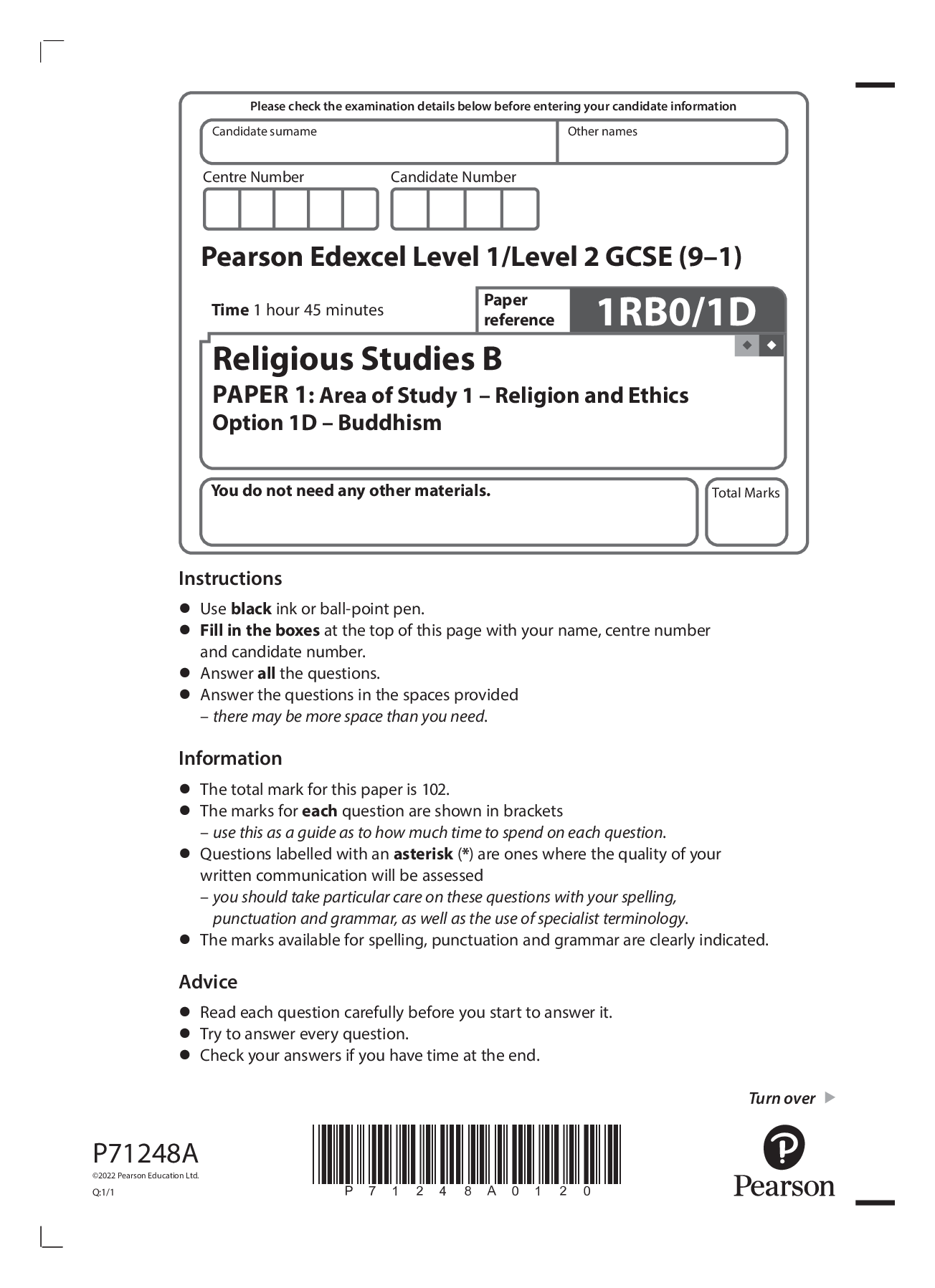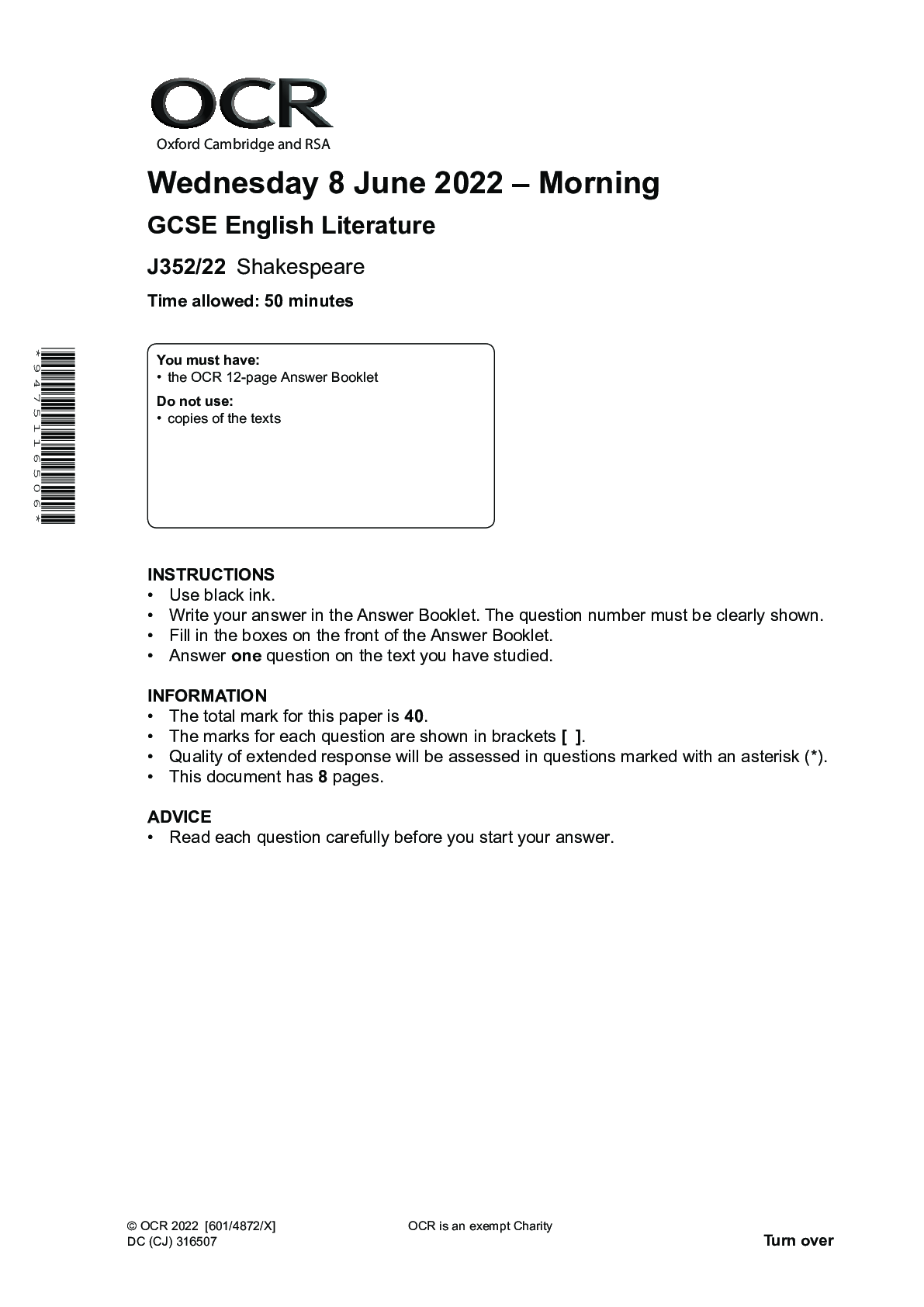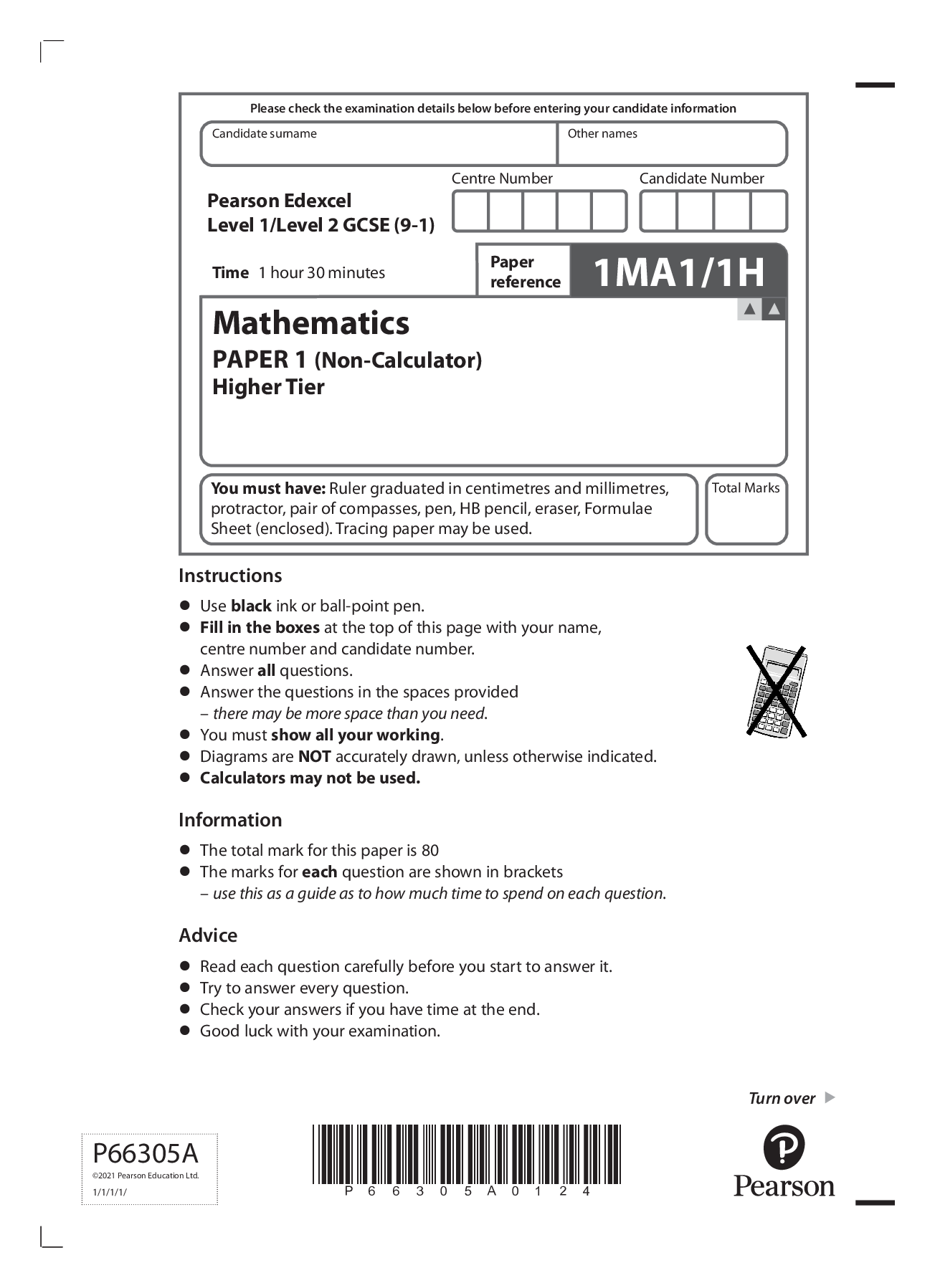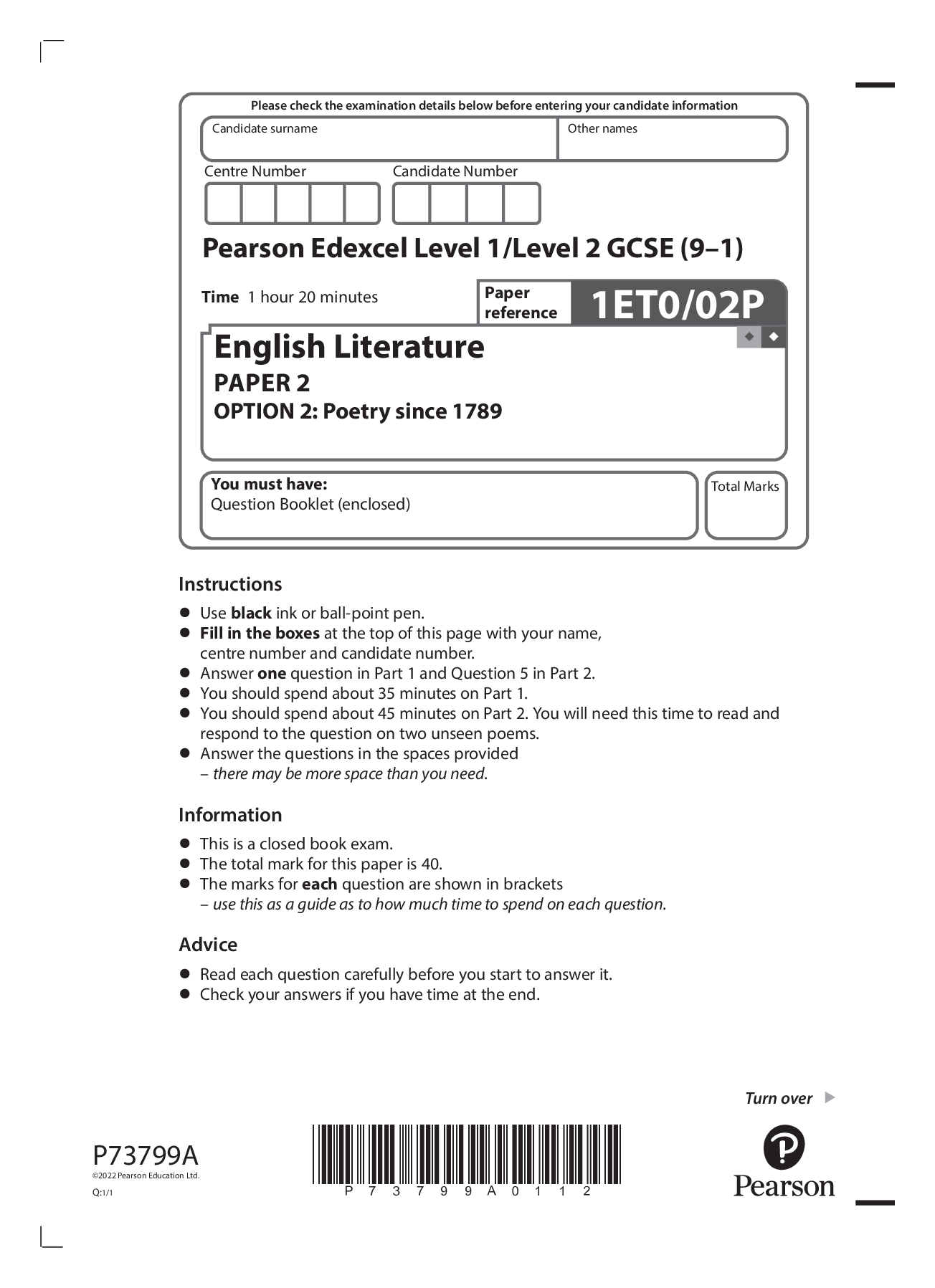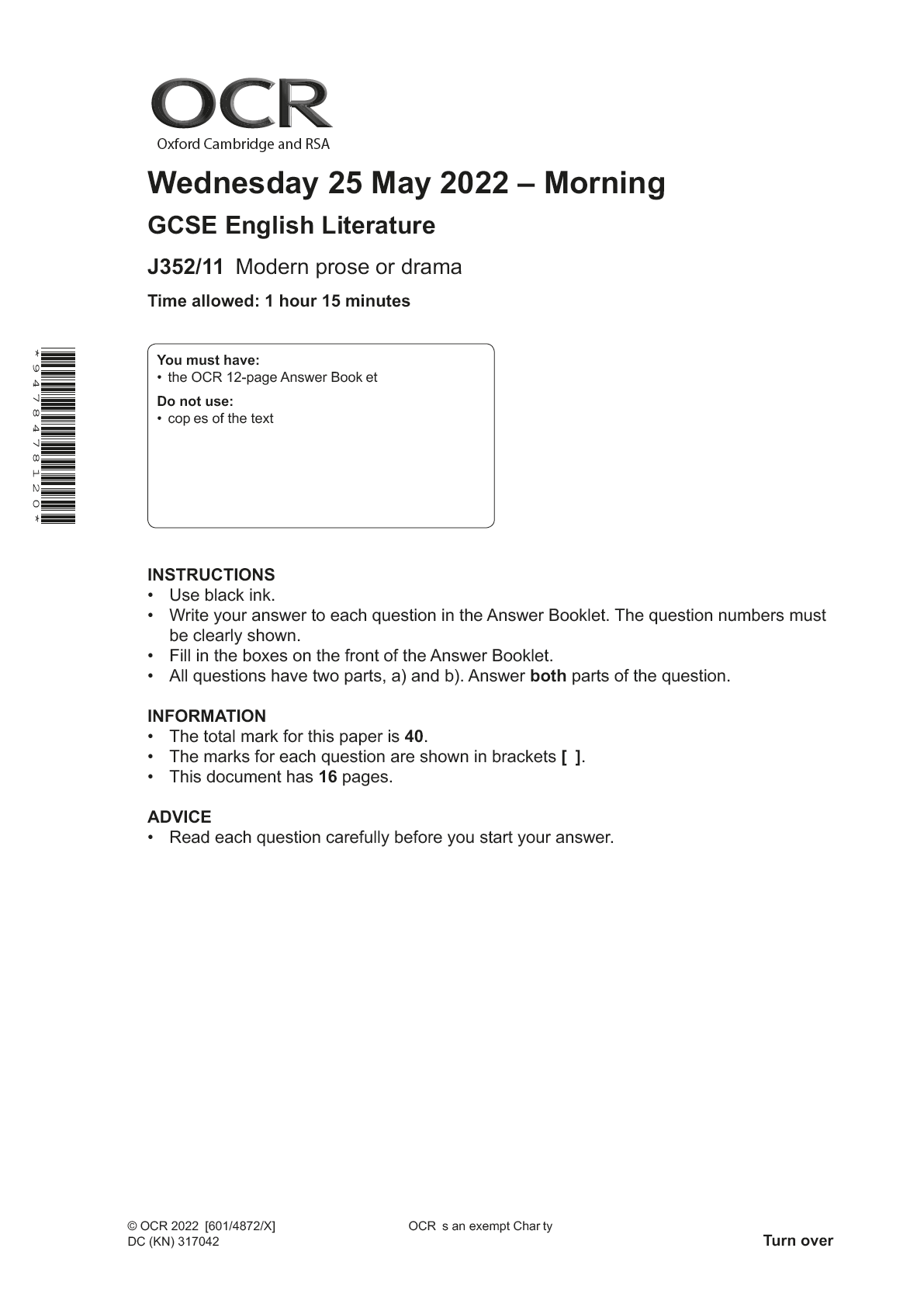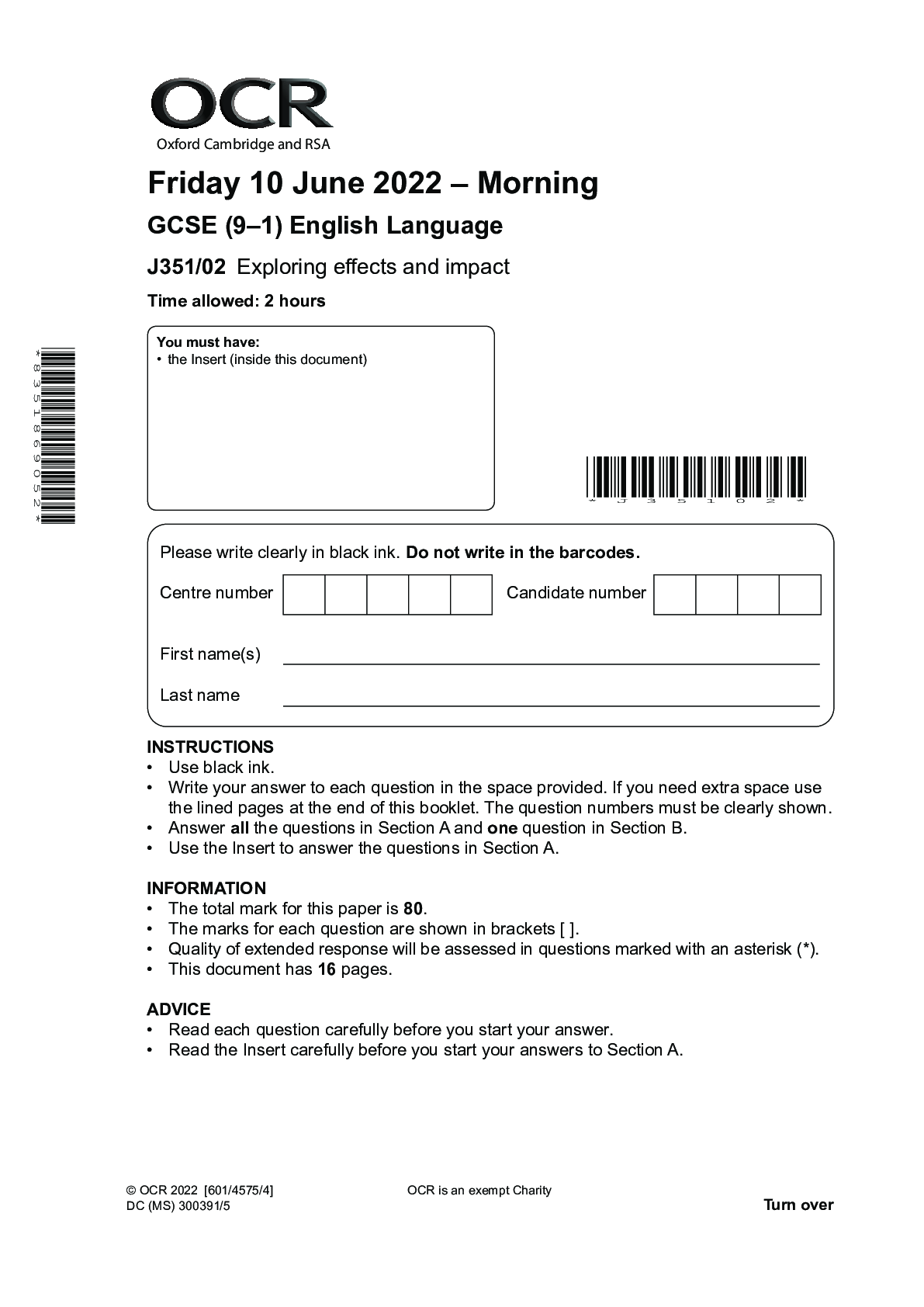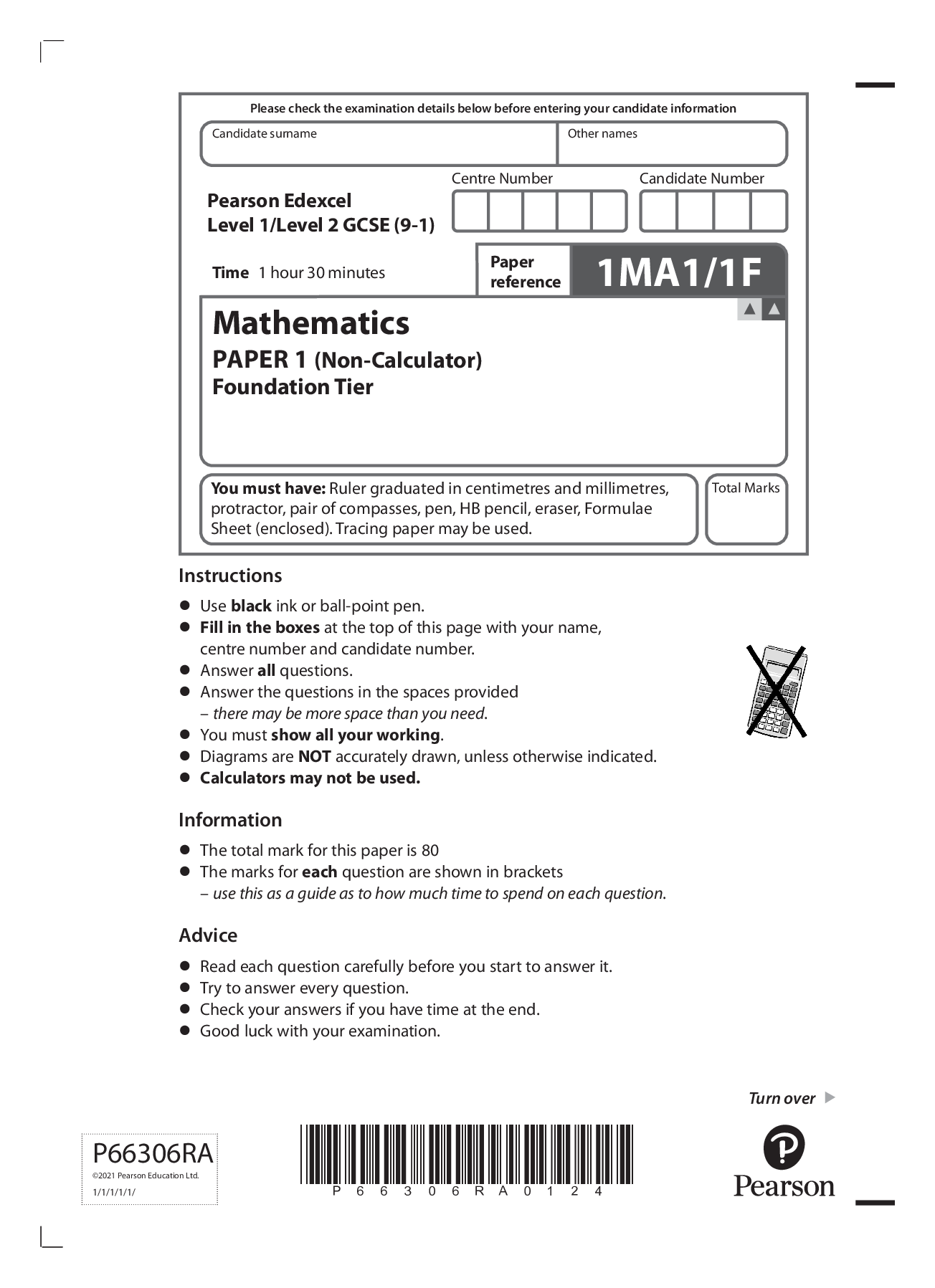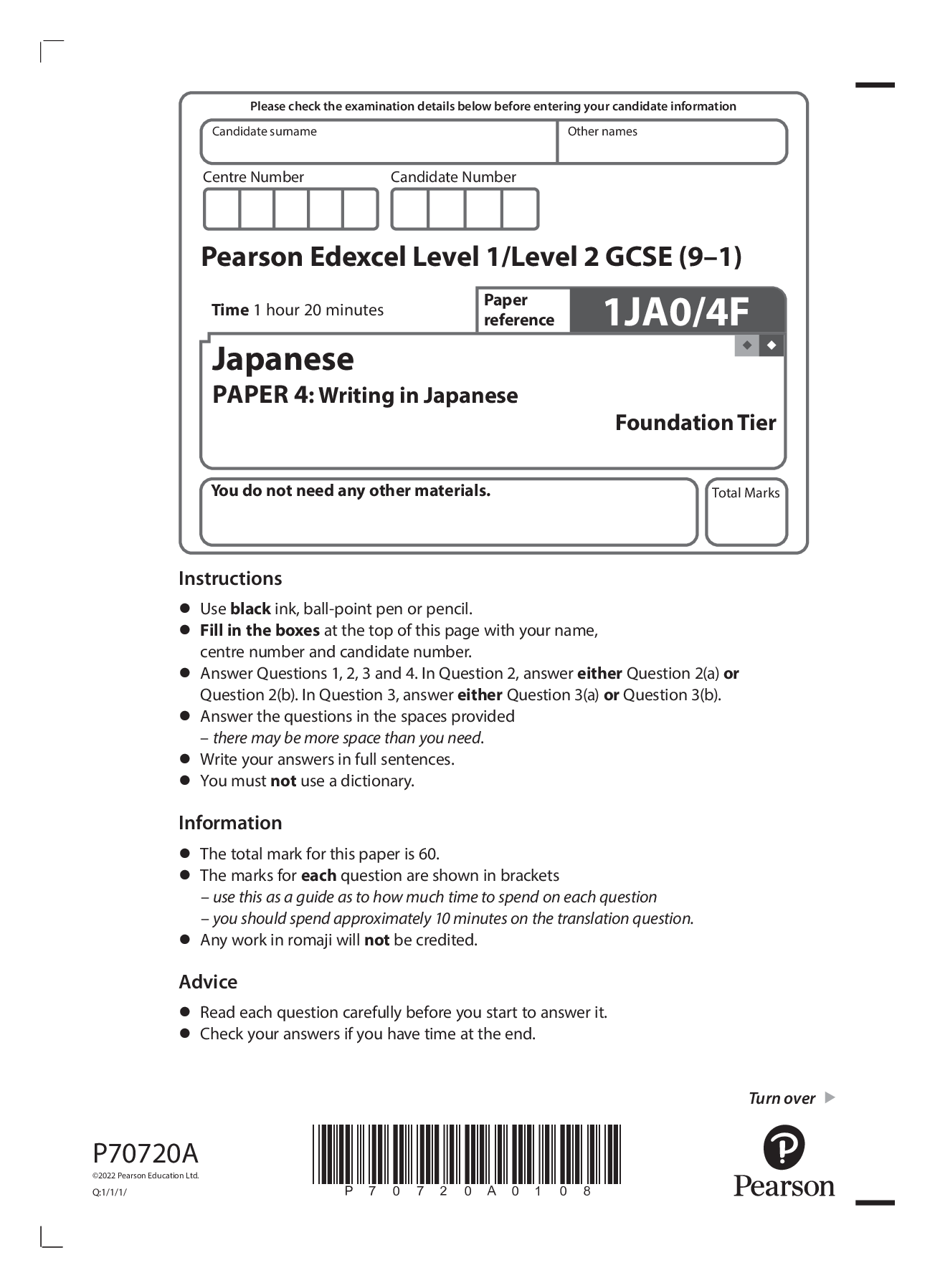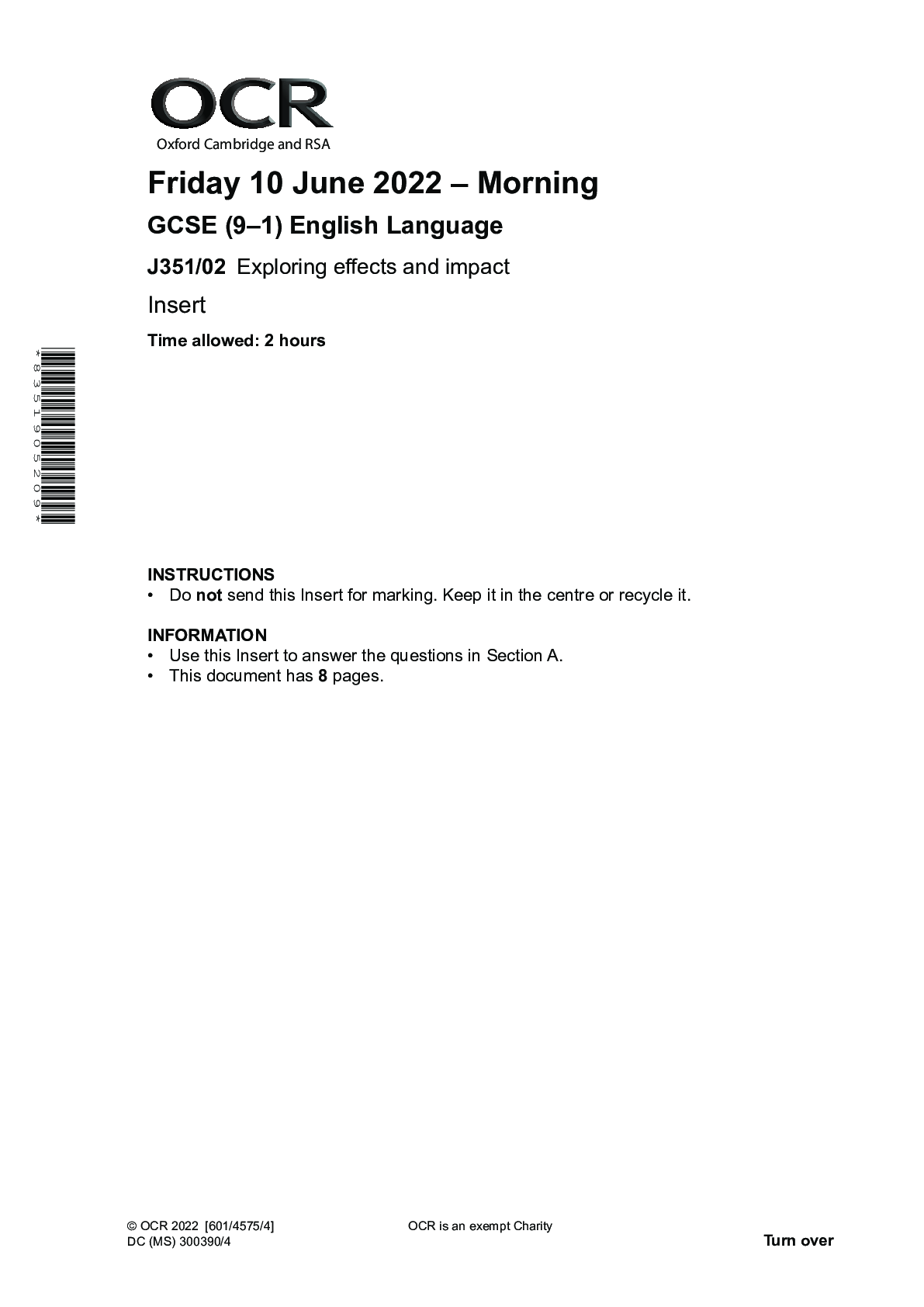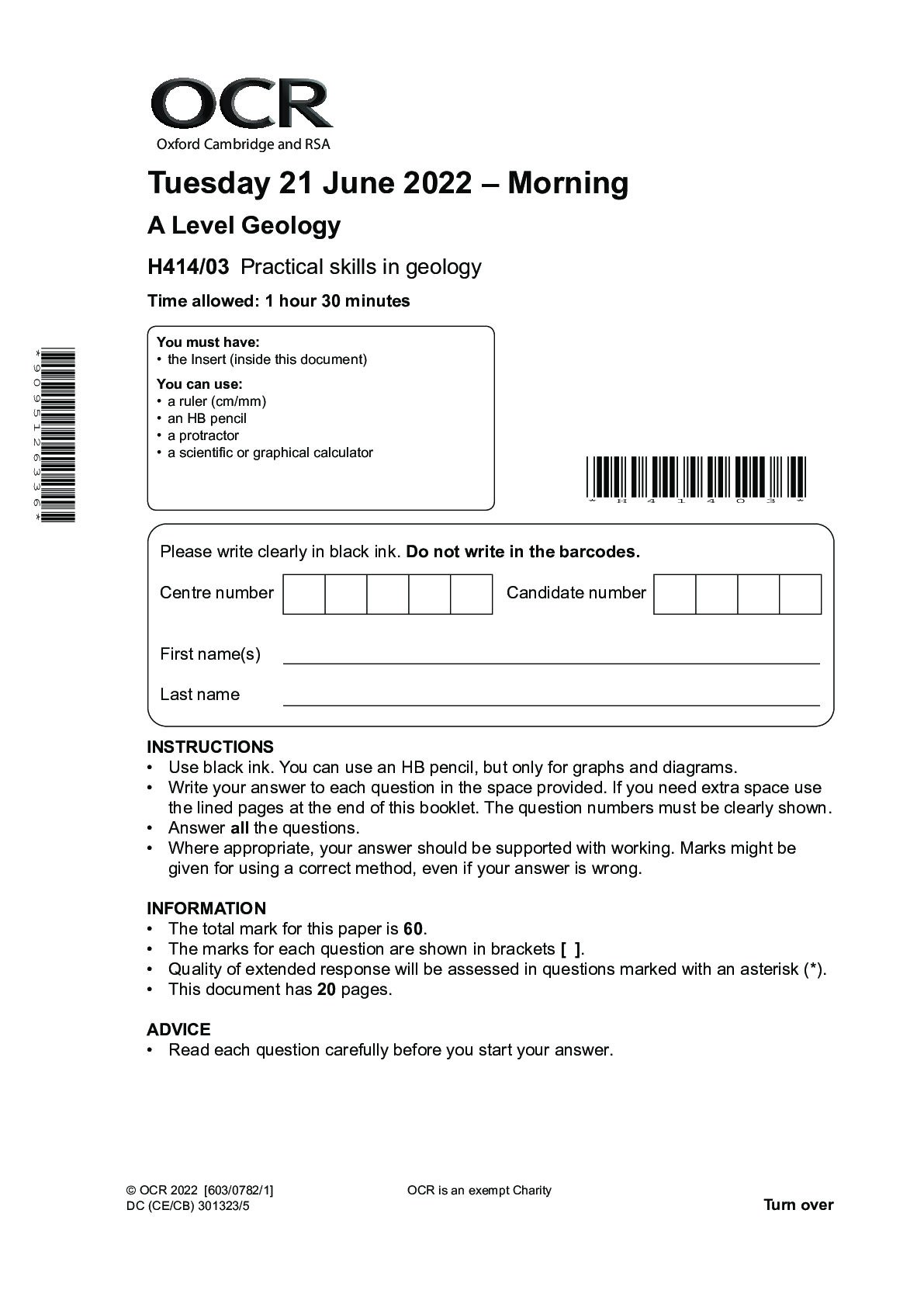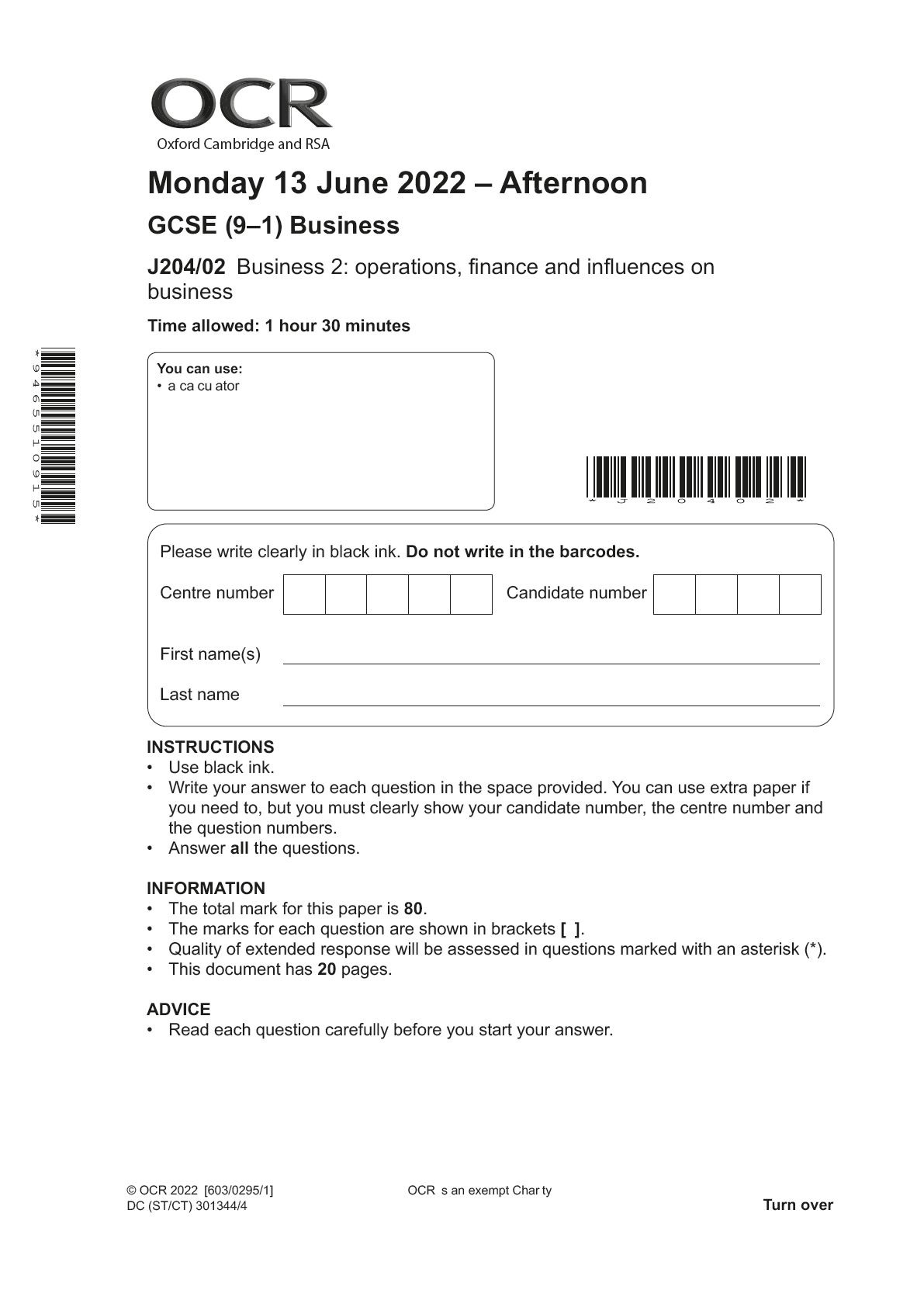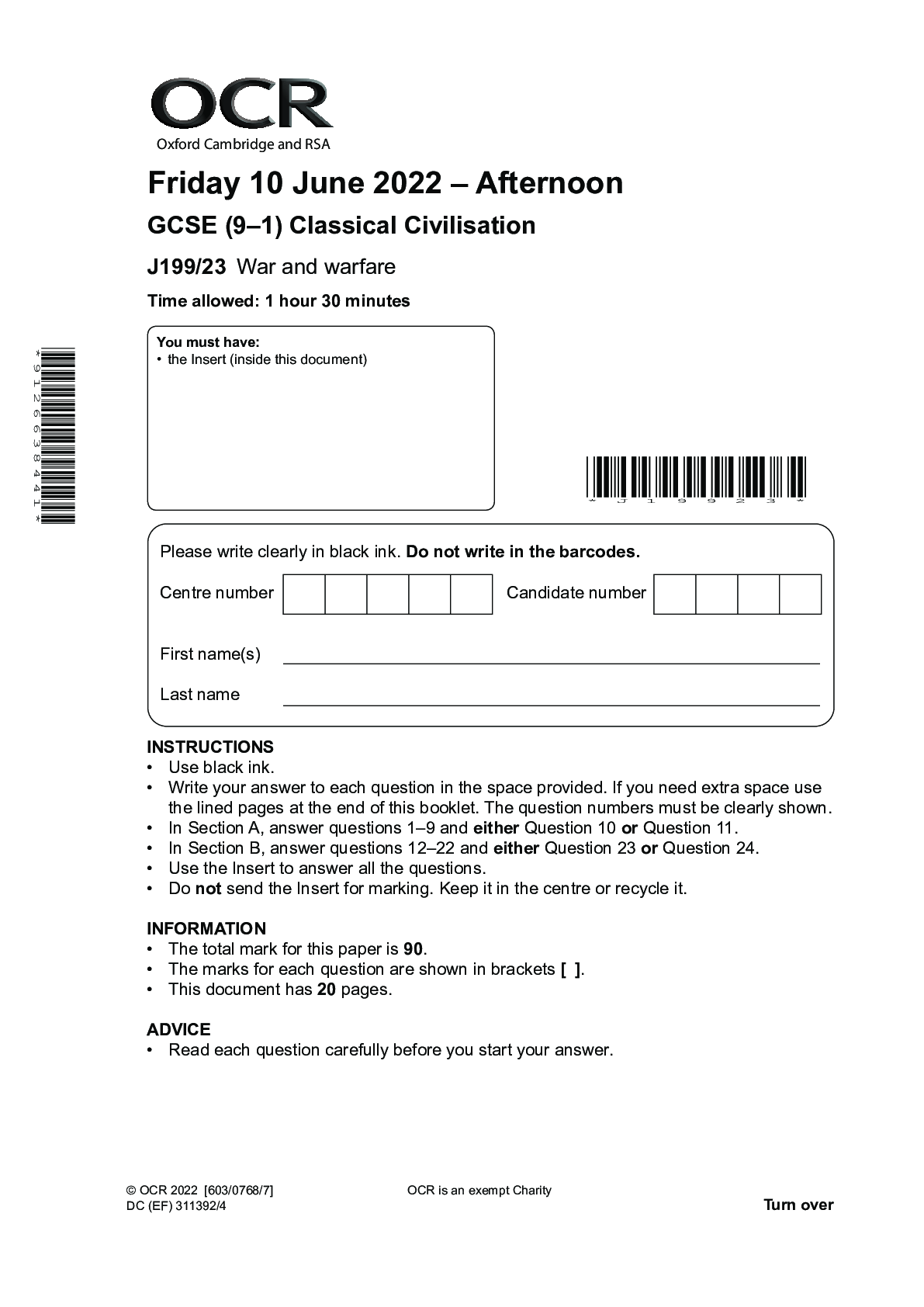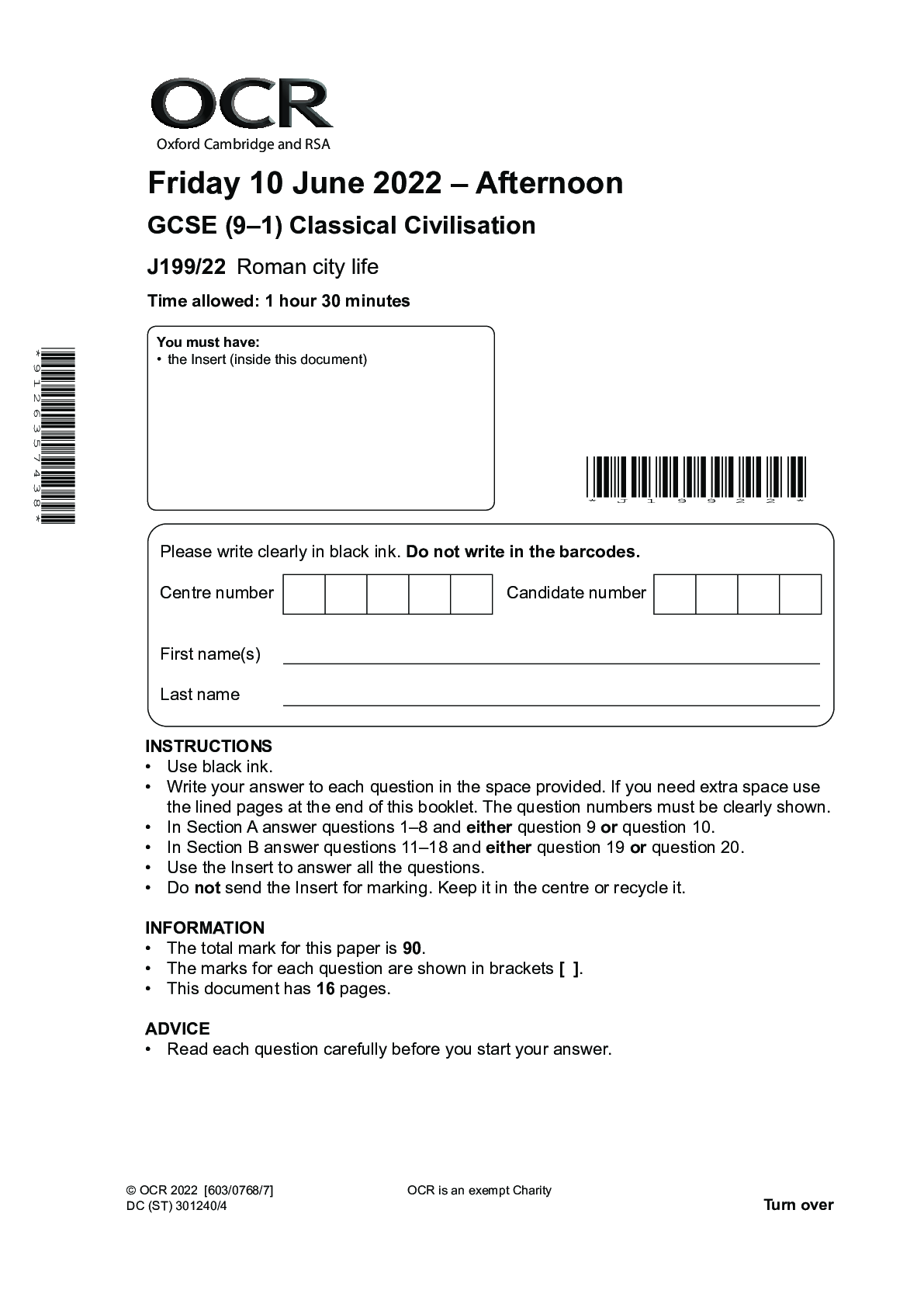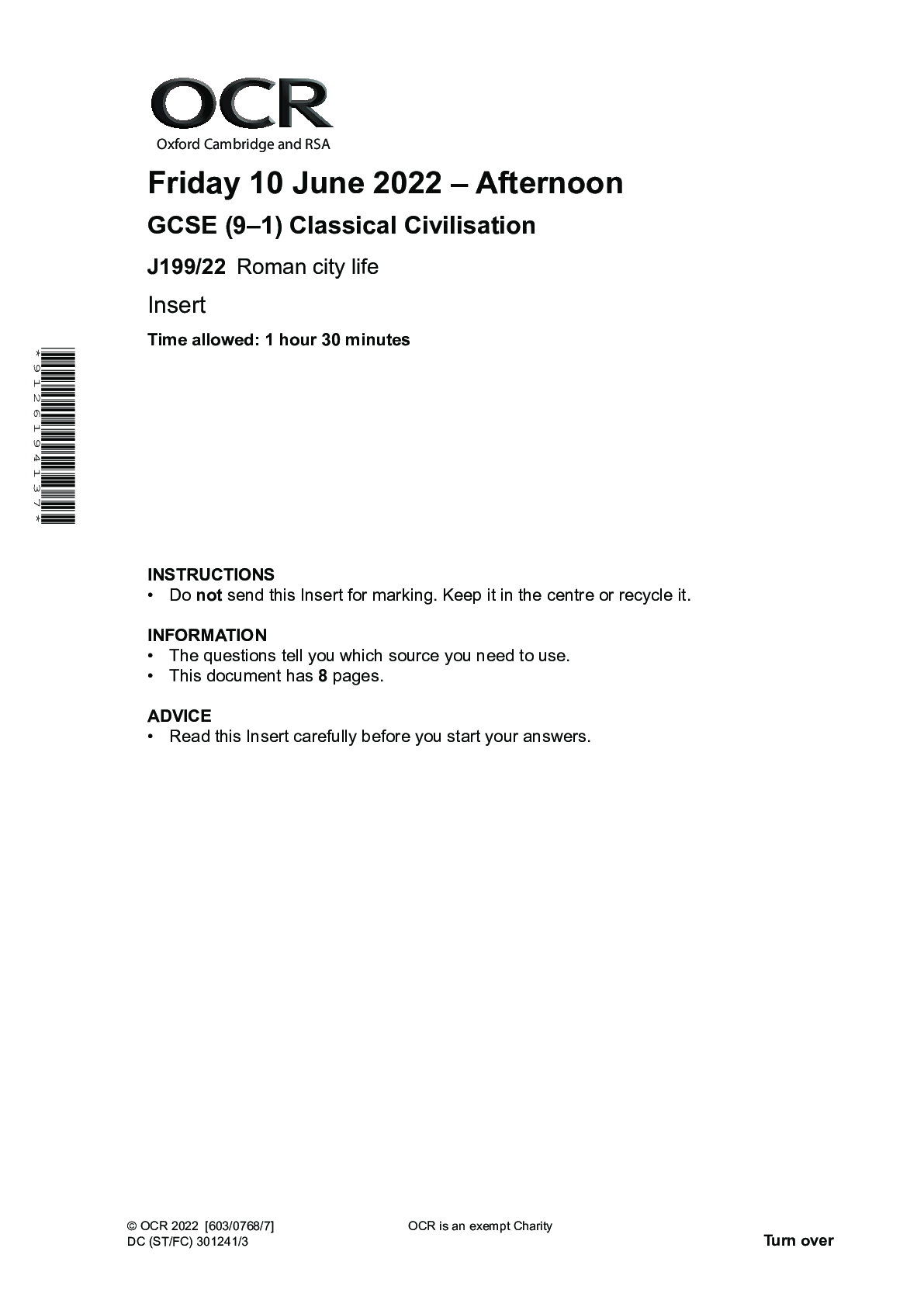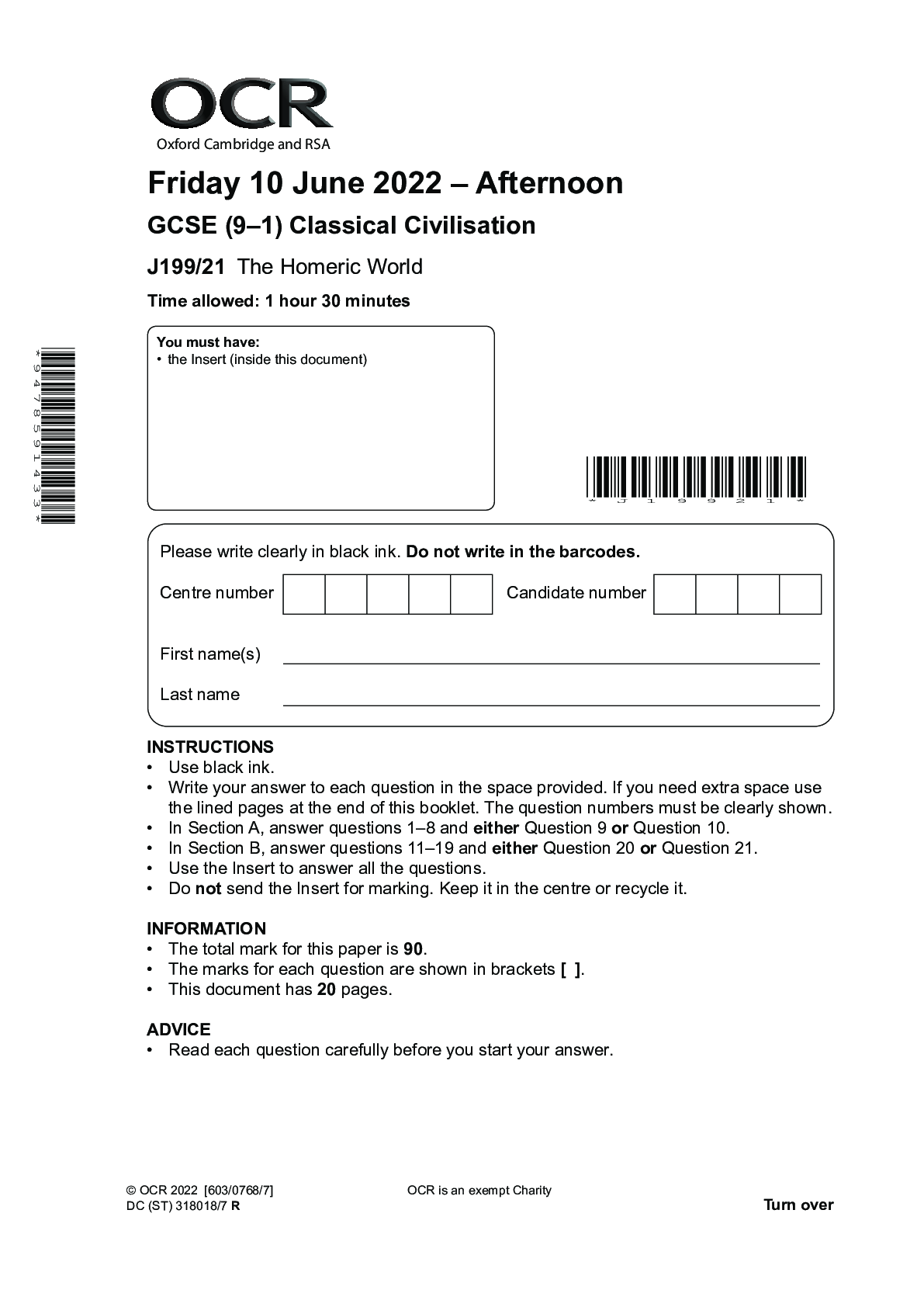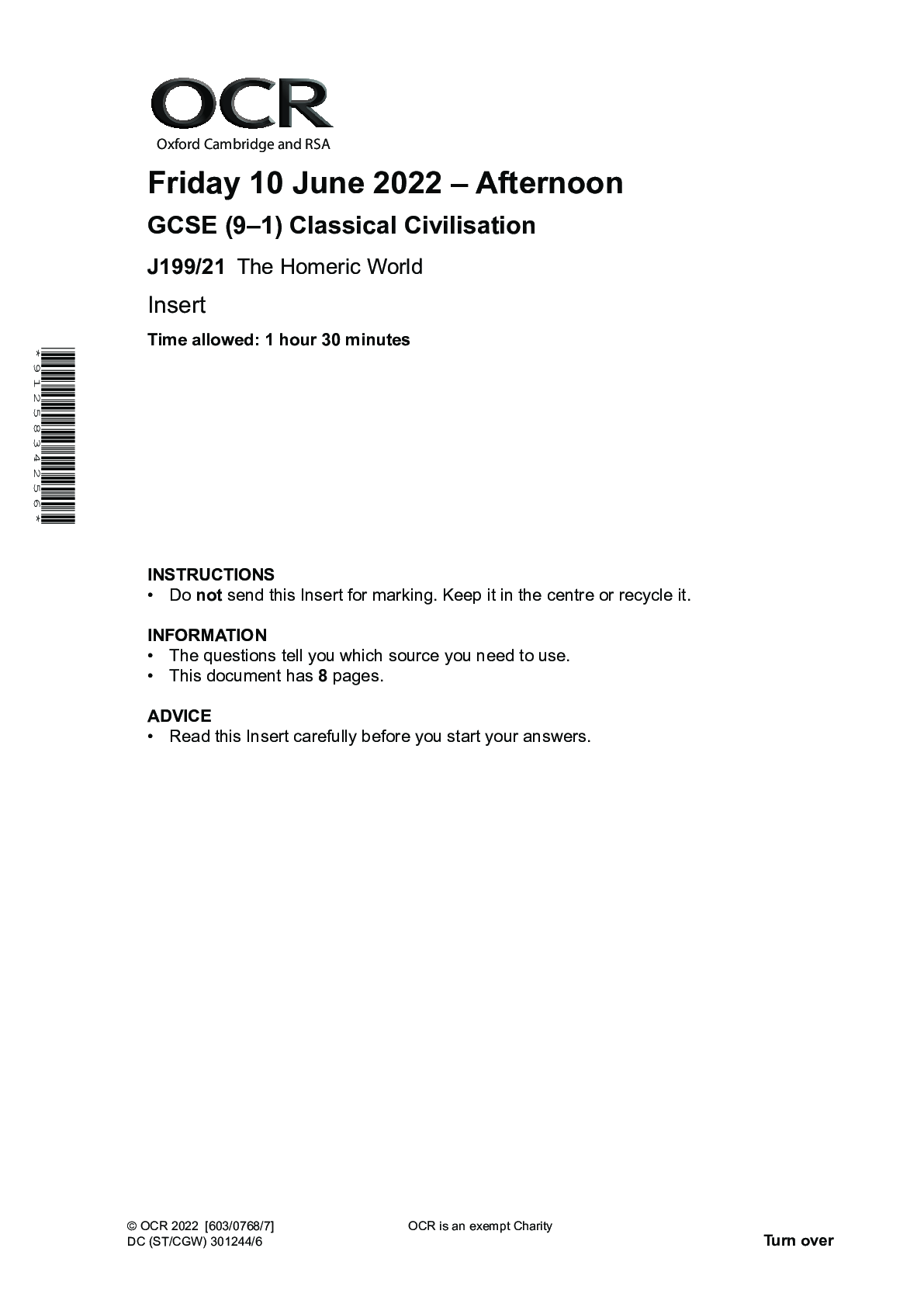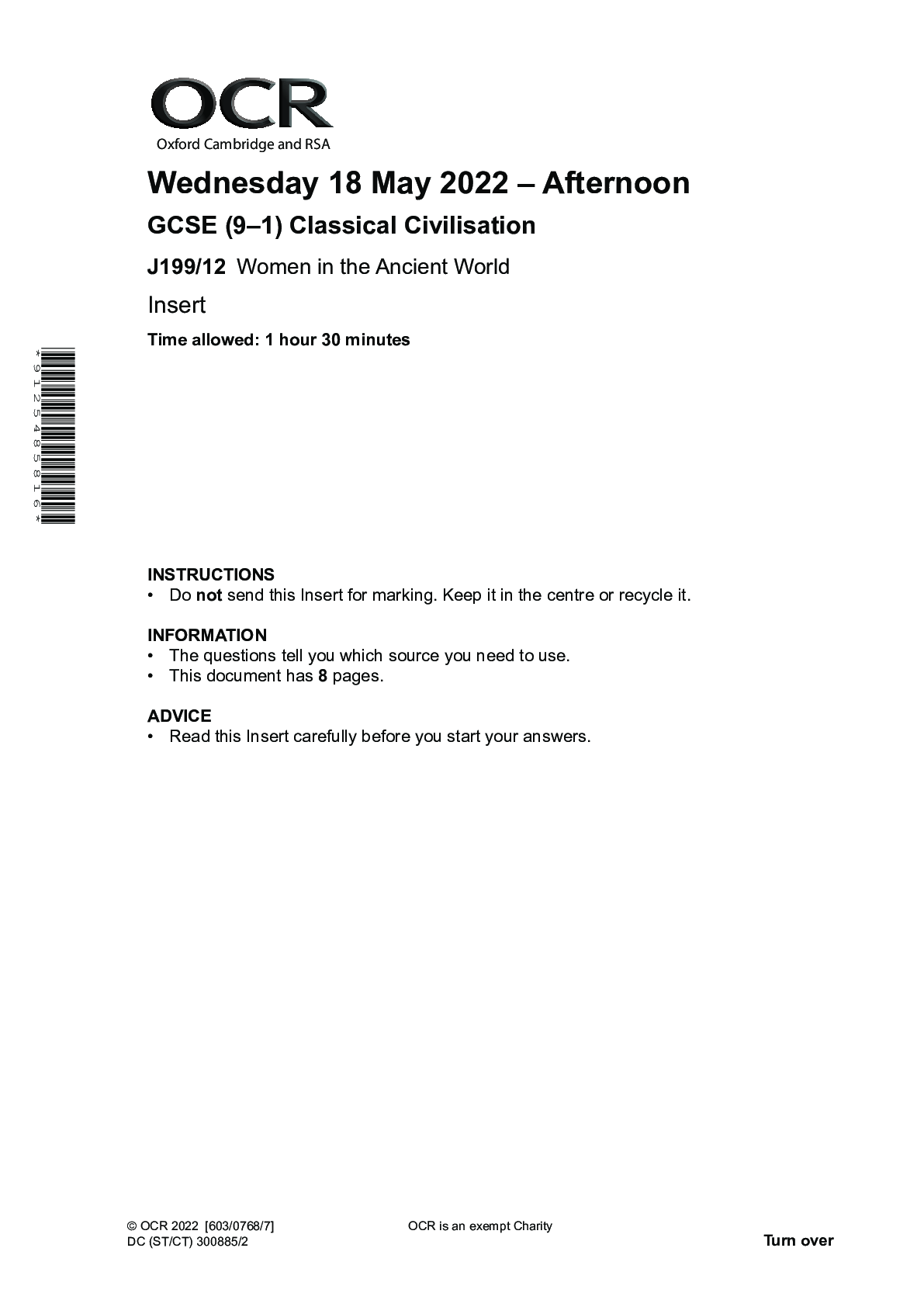English > QUESTION PAPER (QP) > OCR Oxford Cambridge and RSA Tuesday 21 June 2022 — Morning GCSE (9—1) History A (Explaining the (All)
OCR Oxford Cambridge and RSA Tuesday 21 June 2022 — Morning GCSE (9—1) History A (Explaining the Modern World) J410/12 The English Reformation c.i520-c.1550 with Castles: Form and Function C.IOOO—1750 Time allowed: 1 hour 15 minutes
Document Content and Description Below
The English Reformation c.1520–c.1550 Answer all the questions. You are advised to spend about 45 minutes on this section. 1 Explain the impact of the Reformation on ordinary English churches and... parishes between c.1534 and c.1550. [10] 2 Study Sources A–C. ‘Henry VIII dissolved the monasteries because he wanted to get rid of bad behaviour in the Church.’ How far do Sources A–C convince you that this statement is correct? Use the sources and your knowledge to explain your answer. [20] Source A At Monkton Farleigh, I think I found enough evidence to mean the priory should be closed down. The prior has eight women and the monks have between two and four women each. They are carrying out sinful acts with these women. I am also sending you the chains of St Peter, which local women send for whilst in childbirth. I am guessing the thing is a fraud. I am also sending Mary Magdalene’s comb, Saint Dorothy’s comb and Saint Margaret’s comb. They cannot tell me how they came by these objects and they have no proof that they are really relics. A letter Richard Layton wrote to Thomas Cromwell after visiting a monastery in the south of England in 1535. Layton was one of the agents handpicked by Cromwell to carry out the visitations of the monasteries. Mary Magdalene was a close companion of Jesus in the Bible. Source B I hereby freely and wholly sign over to the King this abbey, and all its lands, rents, possessions and income, knowing how the wrongdoings and evil life of this monastery have offended both God and our King. An extract from an official document signed by the Abbott of Furness Abbey in 1537. It was written a month after the Abbott of nearby Whalley Abbey had been executed for taking part in the Pilgrimage of Grace. 3 © OCR 2022 J410/12 Jun22 Turn over Source C There is a small priory in Staffordshire, called Routon, built and paid for by my ancestors. Many of them are buried there and the priory prays for them continually. I beg you to talk to the King for me, to persuade him to allow this priory to carry on. I will give you £100, and the King £100, if you can accomplish this task. But if the King is determined to dissolve it, I wish to purchase it off him, as it adjoins lands I have in the area. An extract from a letter written to Thomas Cromwell by Sir Simon Harcourt, a member of the gentry, in 1536. £100 would have been a year’s wages for approximately twenty average workers. Please turn over for Section B 4 © OCR 2022 J410/12 Jun22 Section B Castles: Form and Function c.1000–1750 Answer all the questions. You are advised to spend about 30 minutes on this section. 3 Explain why Kenilworth Castle changed between 1350 and 1500. [10] 4 Study Sources D and E. Which of these sources is more useful to a historian studying the history of Kenilworth Castle from 1500 to 1750? [10] Source D Saturday 9th July 1575: it was eight o’clock in the evening when her Highness came to Kenilworth. Over the castle gate was attached a beautifully carved and decorated coat of arms: that of the Queen. She moved through the Brays into what they call now the tiltyard, where a tall man clothed in silk, well built and good looking, gave a passionate speech. He signalled to his trumpeters on the wall of the gate to sound a tune of welcome. Her Highness rode along the tiltyard through the inner gate. There, on a new island blazing with torches in the middle of the pool, appeared a woman dressed as the Lady of the Lake with two maidens at her side. All were dressed in silks. An extract from a description of Queen Elizabeth’s arrival at Kenilworth by Robert Langham. Langham was appointed by Robert Dudley, Earl of Leicester, to assist in the day to day running of the castle. 5 © OCR 2022 J410/12 Jun22 Source E Some of the information on each image has been written below that image in modern English. 4 6 7 8 10 11 12 14 4. The Swan tower 6. The Strong tower 7. The Hall 8. Lancaster’s buildings 10. Leicester’s buildings 11. The great gatehouse 12. Lunn’s Tower 14. Mortimer’s Tower 1. The gallery tower 3. The tiltyard wall 6. The roof of the Stable 1 3 6 7 8 10 7. Leicester’s buildings 8. Lunn’s Tower 10. The great gatehouse The view of Kenilworth Castle from the south The view of Kenilworth Castle from the northeast Two sections of an illustration of Kenilworth Castle, drawn in 1649. The illustration appeared in a book of local history for Warwickshire written by William Dugdale, a local landowner and historian. The book was published in 1656. END OF QUESTION PAPER 6 © OCR 2022 J410/12 Jun22 BLANK [Show More]
Last updated: 2 years ago
Preview 1 out of 8 pages
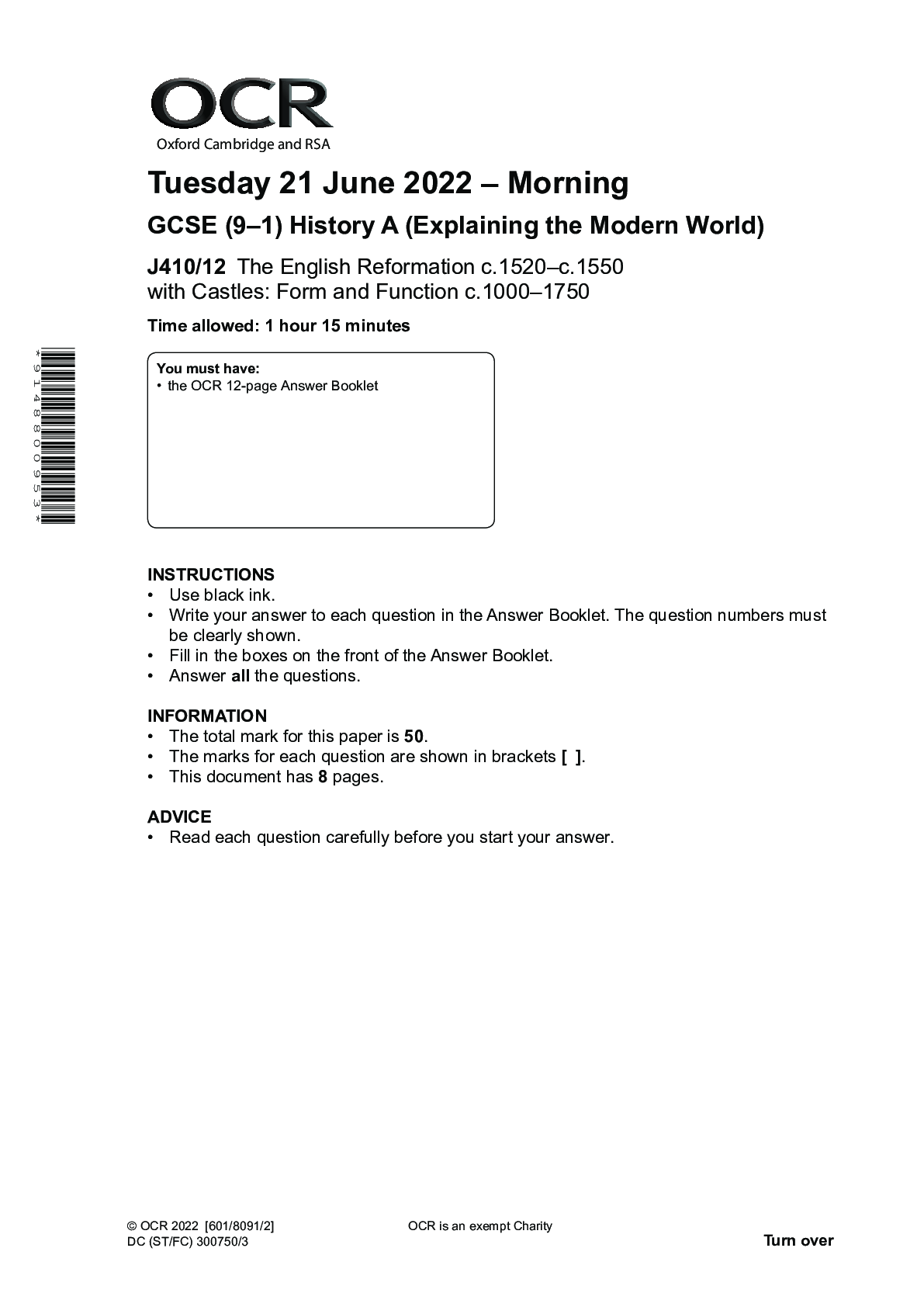
Buy this document to get the full access instantly
Instant Download Access after purchase
Buy NowInstant download
We Accept:

Reviews( 0 )
$6.00
Can't find what you want? Try our AI powered Search
Document information
Connected school, study & course
About the document
Uploaded On
Apr 02, 2023
Number of pages
8
Written in
Additional information
This document has been written for:
Uploaded
Apr 02, 2023
Downloads
0
Views
138

